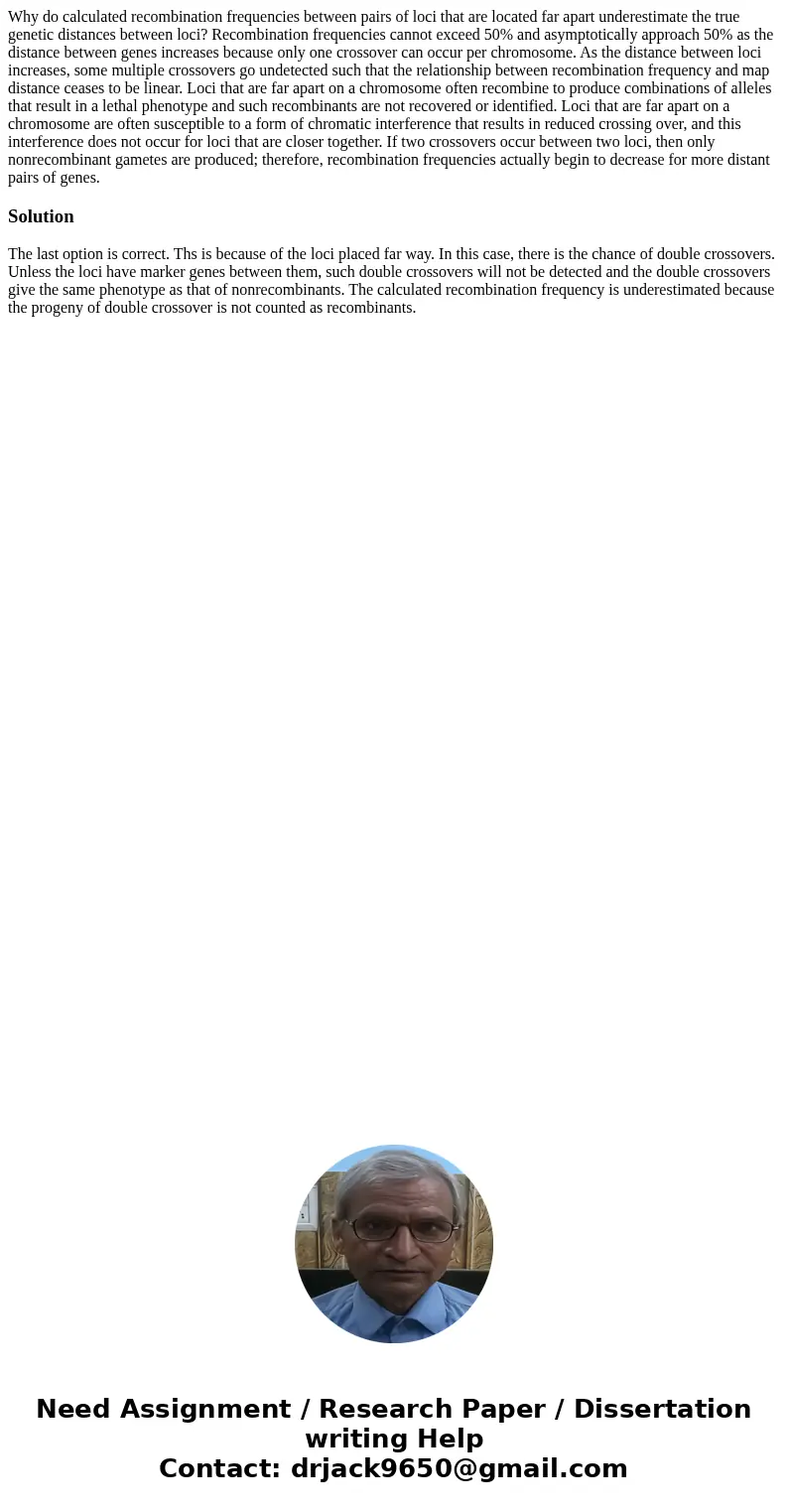Why do calculated recombination frequencies between pairs of
Why do calculated recombination frequencies between pairs of loci that are located far apart underestimate the true genetic distances between loci? Recombination frequencies cannot exceed 50% and asymptotically approach 50% as the distance between genes increases because only one crossover can occur per chromosome. As the distance between loci increases, some multiple crossovers go undetected such that the relationship between recombination frequency and map distance ceases to be linear. Loci that are far apart on a chromosome often recombine to produce combinations of alleles that result in a lethal phenotype and such recombinants are not recovered or identified. Loci that are far apart on a chromosome are often susceptible to a form of chromatic interference that results in reduced crossing over, and this interference does not occur for loci that are closer together. If two crossovers occur between two loci, then only nonrecombinant gametes are produced; therefore, recombination frequencies actually begin to decrease for more distant pairs of genes.
Solution
The last option is correct. Ths is because of the loci placed far way. In this case, there is the chance of double crossovers. Unless the loci have marker genes between them, such double crossovers will not be detected and the double crossovers give the same phenotype as that of nonrecombinants. The calculated recombination frequency is underestimated because the progeny of double crossover is not counted as recombinants.

 Homework Sourse
Homework Sourse